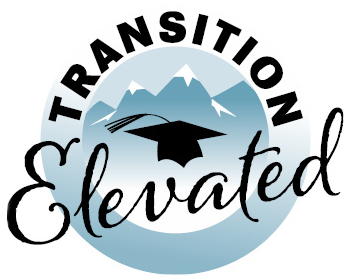Postsecondary Transition for Students with Disabilities
Improving post-school outcomes for students with disabilities
Vision of Postsecondary Transition for Students with Disabilities
Upon completion of high school, students with disabilities in Utah will meet the same expectations for success as their as their peers without disabilities. This including having the knowledge and skills to learn, work, engage civically, and lead meaningful lives.

Educators
Designed for all education professionals.

Community Partners
Designed for organizations serving youth with disabilities.

Students & Families
Designed for students with disabilities and their families.
Improving post-school outcomes for students with disabilities
The purpose of this website is to improve post-school outcomes for students with disabilities by providing a platform for sharing resources, information, and tools for collaboration and coordination of services for students, families, educators, and providers.

The student’s voice is essential throughout the entire postsecondary transition process.
Number of transition-age youth with disabilities on Individual Education Programs (IEP)
%
Numbers of former students current enrolled in higher education and employed 2023-24 school year Breakdown
Students served by Pre-Employment Transition Services (Pre-ETS) and/or Vocational Rehabilitation (VR)
Frequently Asked Questions
What is a Postsecondary Transition Plan?
A postsecondary transition plan helps the student move into adult life after high school. In Utah, the school must develop a written transition plan as part of the Individualized Education Program (IEP) if the student is 14 or older. Having an effective transition plan is important to help plan for the student’s goals after high school and assure that the appropriate services and supports are obtained to meet the student’s goals. A well written plan can help the student with obtaining a job, access college or further training, and independent living.
The transition plan must be focused on the student’s preferences, interests, needs, and strengths (PINS). It should also include goals and timelines for IEP team members to follow. This will help to make sure progress is being made towards the student’s transition goals. Beginning at age 14 or younger, the student should be involved in discussing their transition planning wants and needs prior to the IEP team meeting. The IEP team develops the transition plan during the IEP team meeting. The transition plan is a legal part of the IEP and must be attached to the IEP the school sends to the student and family.
What is an Age Appropriate Transition Assessment?
Transition assessments help the student learn more about themselves and what they would like to do after high school. A teacher might ask family members and other teachers about the student’s skills, interests, and transition needs. Academic information, career assessments, independent living skills, community or employment experiences may help identify the skills, interests, strengths and needs the student has a they plan for additional education, training and employment after high school. The Transition Plan must be based on at least one recent age-appropriate transition assessment.
What are Transition Services?
Transition services are a part of the transition plan. They are activities completed while in school to help meet the student’s goals for after high school. These activities will help the student improve on skills needed to help get a job, keep a job, go to college and live independently.
Beginning when a student is 14, the IEP must explain the transition services needed for that student. A list of classes and supports the student needs to help prepare them to move to adult life must also be provided.
How long can transition services be provided through school?
Transition services are focused on the student’s needs, preferences and interests. Transition services start with transition planning at age 14 in Utah. Determined by the student’s IEP team, students in Utah can continue to receive transition services until the student earns his/her regular diploma or through the end of the school year in which they turn 21. The IEP team must discuss the types of transition services needed and how long those services will be provided.
What are Pre-Employment Transition Services (Pre-ETS)?
Pre-Employment Transition Services, also called “Pre-ETS,” — Offered to any student with a disability — aids students in exploring and planning for successful future employment, through targeted training in:
- Career exploration
- Workplace readiness
- Counseling on postsecondary education
- Self advocacy
- Work-based learning
Eligible Students for Pre-ETS
- Must be aged 14-21, and
- Eligible for and receiving services under the Individuals with Disabilities Education Act (IDEA) or is an individual with a disability for purposes of section 504, and
- Is enrolled in a secondary or postsecondary educational program
How can a student get Pre-ETS?
Services Offered
Vocational Rehabilitation (VR) Counselors and Pre-ETS Instructors:
- Attend individualized education program (IEP) meetings with parents and students
- Conduct Job Readiness workshops at schools
Provide one-on-one counseling and coordination services with eligible clients Community Partners*: Provide Pre-ETS instruction for clients in either one-on-one or group settings, in the following ways:
- Contracted Service: The Utah State Office of Rehabilitation (USOR) has contracted with community partner agencies to provide Pre-ETS instruction for eligible and potentially eligible students, helping to ensure these services are available statewide.
- Fee-for-Service: Community partner agencies provide specific Pre-ETS allowable services for eligible clients, authorized by a VR Counselor
NOTE: Receiving Pre-ETS instruction provided by a USOR-sponsored contract is the beginning of a continuum of services USOR offers to students with disabilities. Students with disabilities do not need to be a USOR-Vocational Rehabilitation client to receive Pre-ETS through our contracts but may apply for VR services at any time. However, contractors will confirm that students meet criteria to participate in their services prior to commencing with services
